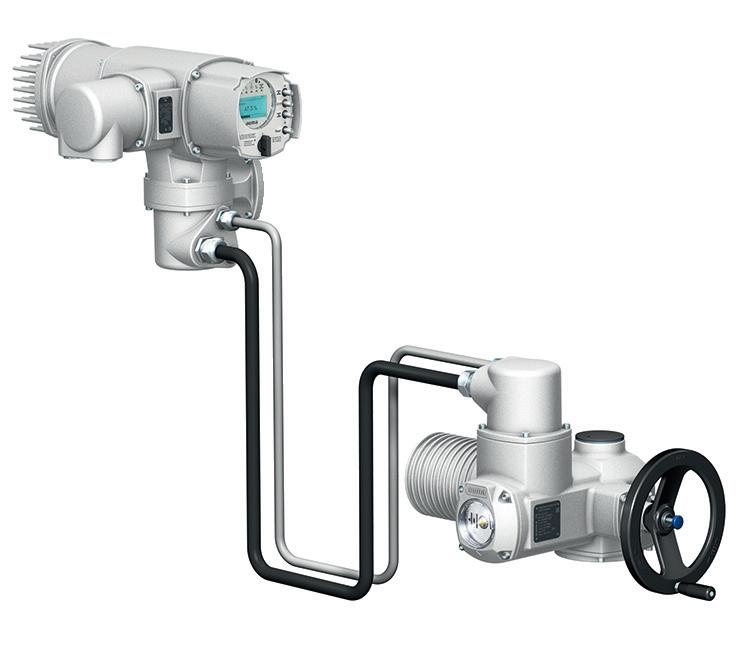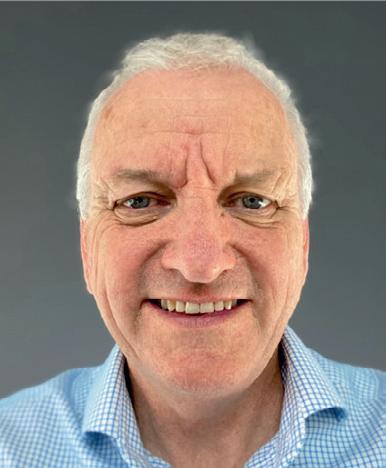
36 minute read
MARK FERGUSON, KAISHAN AUSTRALIA
MARK FERGUSON
CEO, KAISHAN AUSTRALIA
What opportunities do you predict for the growth of your industry in 2021? With a renewed emphasis on local manufacture, it is anticipated there will be an increased demand for economical, sustainable compressed air generation to power machinery and tools across a wide variety of industries. Opportunities in manufacturing of scientific instruments, new age technologies and equipment, and a return to homegrown design and engineering will foster the need for new generation, highly efficient air compressors and ancillary equipment.
With the growth of new industries will come the need for existing manufacturers to upgrade their equipment to the new world standards required to compete on both the local and international markets.
With energy costs rising constantly, compressed-air-reliant industries will need to lower the cost of energy input whilst maintaining or increasing compressed air power output. This will be achieved by upgrading outdated equipment by offsetting capital expenditure with massive energy savings over years of operations.
We at Kaishan Australia are at the forefront in the supply and servicing of super energy-efficient air compressors for all types and sizes of industry over a wide range of applications.
Our support and service teams are primed for a high demand in new equipment installations and regular service programs that maintain compressed air systems at peak operating efficiencies. These highly trained specialists have the experience and know-how to maximise operating efficiencies in virtually any type or brand of air compressor and system.
What are the three biggest challenges or threats facing your industry in 2021? 1. Finding the right people to lead our industry into this new decade.
From experienced and entrepreneurial managements to highly trained support and service technicians who can keep pace with the latest energy-saving engineering and technologies. 2. Continuing to research and develop ever more efficient compressors and system components that will keep pace with the demands of industry in a world that is experiencing energy shortages and ever increasing costs. 3. Keeping in tune with industry developments so as to predict and cater to the changing needs of Australian industry. We need to be proactive rather than reactive to growth and change.
What impact has the COVID-19 global pandemic had on your industry and how does this affect your business strategies for 2021? Obviously, the restrictions placed on industry with reduced workforce, greatly changed working conditions and operating limitations for our own business have affected our bottom line. More importantly the effect on our client companies and general suppression of business expansion has reduced the demand for our products, particularly in the smaller business sector.
Whilst some companies saw complete or partial shutdown as an opportunity to upgrade or service existing equipment, our service division continued to operate utilising strictly COVID-safe procedures on a 24/7 basis to solve problems swiftly and keep clients operational at the highest efficiency possible.
We have planned to operate at maximum possible capacity with finely tuned contingency strategies which can quickly be implemented should COVID restrictions or lockdowns re-occur. We have re-assessed our future strategies to include rapid response to any predictable future conditions to ensure we maintain a supply chain and service protocol that ensures our clients receive the highest quality of product and support possible.
How has the current international uncertainty impacted your cybersecurity and/or supply chain management plans for 2021? Being a largely autonomous Australian contingent of a leading global corporation with manufacturing plants and offices throughout the world, we are confident that the Kaishan group and our integrated strategies and systems are prepared for any contingency that may threaten.
Whilst we are aware of international political influences affecting world markets, our position as a market leader in the Australian compressed air industry employing a large national workforce is one of continuing to develop and service Australian industry. Formerly operating as Southern Cross Australia Pty Ltd with over 40 years’ experience in supply and service of high-quality air compressors and service, now as Kaishan Australia we are in a far stronger and stable position to supply and service Australian industry.
What are your thoughts about the post COVID-19 ‘new normal’ in relation to remote working technologies and supporting staff? As a supplier of energy-efficient air compressors and systems, we are well prepared to face the changes of COVID-normal conditions. Whilst it is preferred that our workforce can now operate close to normal, we can operate with remote staff connections particularly in the sales and marketing areas. Our tech service teams are fully equipped and stocked to operate with minimal office interaction. Kaishan Australia will always support its staff to remain as safe and efficient as possible until we can drop the COVID from ‘normal’.
For over 30 years Mark Ferguson has worked with a myriad of compressed air equipment applications across Australia. Starting in the industry as a Graduate Engineer, Mark has been involved in all aspects of compressed air including sales and marketing, design and manufacture through to business leadership. “It has been an amazing journey through an incredible number of industries and applications and I’ve never lost the passion for what I do.”
Controlling aim points for heliostat fields in operation
Among solar thermal power plants, solar tower systems are considered to have the greatest potential in terms of efficiency and cost reduction. In particular, costs can be saved on mirrors (heliostats), which account for between 30 and 40 per cent of the investment. However, frequent calibration or control of the heliostat aim points is required. In the HelioControl project, the Fraunhofer Institute for Solar Energy Systems ISE developed a calibration and control system based on digital image processing for heliostat fields. With this method, the aim points of many heliostats can be determined during operation in a timely and cost-efficient manner.
In concentrated solar thermal tower power plants, there can be several hundreds, tens of thousands or even a hundred thousand mirrors that concentrate the sun’s rays onto a central absorber (receiver) at the top of a centrally located tower. The generated heat is transferred to a heat transfer medium (such as molten salt), which is used to generate steam and drive a turbine. In conjunction with a thermal storage unit, the stored heat can also be used to generate electricity at night.
Since the mirrors tracking the sun reflect the radiation over distances of up to one kilometre, even small angular deviations of aim points leads to large losses in power plant efficiency. Although the control system sets the mirror position using a sun-tracking algorithm, it is not known whether deviations between the targeted and actual coordinates exist or how large these deviations may be during operation. During power plant construction, the heliostats are precisely aligned and then they are regularly recalibrated and adjusted via control parameters during operation. This measure, however, demands considerable time and cost for power plant operators, especially with large heliostat fields with many thousands of mirrors. When calibration procedures require reduced effort or are carried out with a closed-loop control, cost reduction potentials can be expected through savings in the structure or drive system.
The goal of the HelioControl project, which was funded by the German Federal Ministry for Economic Affairs and Energy BMWi, was to develop an efficient camera-based calibration and control system for heliostat fields.
During operation, the aim points of individual mirrors are identified from the total concentrated flux density distribution. A video of the irradiated receiver is recorded with a camera. By modulating a periodic movement of the mirror, a signature is introduced into the flux density distribution at the receiver, which can be associated to the individual mirror and its contribution. By using different frequencies, the aim points of several mirrors can be determined simultaneously.
“Using digital image processing, the actual aim point of the heliostat is determined,” explained Dr Gregor Bern, Project Manager at Fraunhofer ISE. “If this deviates from the targeted aim point, the values are transferred to the heliostat control for correction.”
For the new method, the Fraunhofer

©stock.adobe.com/au/Bob
ISE project team developed software that allows aim points to be measured in parallel during operation. After laboratory testing, the system was deployed in the heliostat field at the Themis tower power plant in France. The results are promising. The aim points determined from the images are usually only a few millimetres from the actual aim point. The closed-loop control circuit was also successfully demonstrated.
“Theoretically up to two heliostats per second can be measured in parallel with the HelioControl system. This means that a power plant the size of Noor III in Morocco with 7400 individual heliostats can be recalibrated in less than one hour instead of several weeks as was previously the case,” Bern said.
By measuring the aim points and making a corresponding readjustment, the demands on the intrinsic precision of the drives and on the gear backlash in the power transmission are reduced. The precise and homogeneous alignment of the aim points also avoids so-called “hot spots” — local regions with excessive temperature — which can cause severe damage to the receiver. This increases both the lifetime and the thermal efficiency of the receiver, as it can be operated closer to maximum temperature.
Using simulation models, the project team calculated measurement speed, potential savings and possibly increased operating consumptions of the heliostat motors. The researchers calculated a savings potential in the field of at least 5% for a reference model. This is a considerable amount in view of investments of several hundred million euros for a power plant.
Since the HelioControl algorithm uses industry-standard interfaces, it can be easily integrated into existing power plants. It can also be used for the optimal calibration of heliostats during power plant construction. The Fraunhofer ISE project team is presently looking for further partners for demonstration and commercial application of this approach in large tower power plants.
PORTABLE NETWORK TESTER Anritsu introduces the Network Master Pro MT1040A, a portable 400G network tester for evaluating the transmission quality of networks operating at speeds ranging from 10 Mbps to 400 Gbps. Featuring a compact design, ease of use and broad test capabilities, the MT1040A can be used to efficiently and confidently install, maintain and troubleshoot communications devices, transceivers, cables, networks and data centres up to 400 Gbps.
Directly inserted next-generation QSFP-DD and OSFP multi-rate modules and break-out cables up to 400G with native SFP+/ SFP28, QSFP and OSFP interfaces allow the Network Master Pro MT1040A to perform forward error correction (FEC) verification, Bit Error Rate, throughput and latency measurements. These tests verify performance of high-speed network cables and devices; private and distributive networks; access, metro and core network segments; mobile edge computing, and data centre TOR/COR equipment addressing new 5G application services. Communications carriers, network installation and maintenance companies, and back office and data centre personnel can use the tester to ensure the transmission quality of 400G Ethernet, OTN, eCPRI/RoE/CPRI/ OBSAI and Fibre Channel networks and elements.
The Network Master Pro MT1040A has a built-in 400G Ethernet FEC analysis function for quality evaluations of QSFP-DD and OSFP optical modules and 400G devices and equipment. Additionally, the MT1040A can be configured with compatible OTDR modules to simultaneously conduct optical line measurements to troubleshoot optical fibre faults.
Throughput and latency measurements between two remote points using GPS can be achieved by linking dual MT1040A instruments — one as a local and another as a remote. Using this functionality, uplink communications speed can be measured by the local tester while simultaneous and accurate analysis of the downlink communications speed is done by the remote unit.
Designed for today’s installation and maintenance (I&M) environments, the battery-powered MT1040A has a large 9″ touch panel for good operability. Measurements are simplified by a built-in remote control over network capability, as well as automatic test functions and multiple pass/fail evaluations that can be performed by pressing a single button.
Anritsu Pty Ltd
www.anritsu.com

One Giant Leap in Burst Disc technOLOGy…the Safety Cartridge
• One piece assembly - nO speciaL hOLDers requireD - instaLL Between existinG fLanGes • FOrward acting disc type 1”–8” Ø reverse Opti-gard disc type 1”–12” Ø • suitable FOr Full vacuum

mOdel HPSR hiGh pressure cartriDGe 2500 – 6000psi
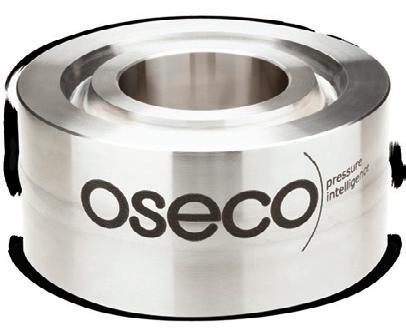
AUSTRALIAN AGENT & TECHNICAL SUPPORT We handle Pressure ®
9501P&SS-WNIPT
Transforming the electrical wholesale industry

With COVID-19 restrictions reducing opportunities for in-store interactions, the electrical wholesale industry has had to rethink the way in which it operates.
Many electrical retailers are now relying more heavily on online and phone-based connections to maintain proximity with their customer base.
One such electrical wholesaler, which has successfully transformed into a multi-channel customer service operation, is JH Market.
JH Market operates a marketplace for products sourced globally that are designed, tested and certified to Australian standards. The business is almost 25 years old and has grown from a small walk-in store to an industry-leading supplier of lighting and electrical products with branches in Victoria and Queensland. It supports a 12,000-strong trade customer base and is currently diversifying with a focus on new customer acquisition and expansion into South Australia.
“It’s pretty rare in our industry to have a phone-based sales team and multi-channel support for customers,” said Michael Gonsalvez, JH Market’s Chief Experience Officer.
“Most of our industry is still reliant on physical showrooms, with sales interactions and pickups in store.”
The business already operated with most of its IT infrastructure in the cloud, so when it moved to a new office in late 2019 and its onpremise phone system contract went up for renewal, RingCentral was chosen from a shortlist of cloud communications solutions which also had outbound dialler capabilities.
According to Gonsalvez, part of JH Market’s vision was to ‘turbo charge’ account management with much more targeted and relevant outbound sales calls and interaction with their customers. Rather than each salesperson calling down a list of their trade contacts, JH Market has integrated customer scoring data from its e-commerce platform with other customer data analytics, including buying history and contact rates, using data science to predict the optimal times to be calling each customer on particular campaigns or regular catch-ups.
When the first COVID-19 lockdown came into effect in March, JH Market already had its new RingCentral Office and Contact Centre communications solution, e-commerce site and account management operations in place, so it was quite straightforward to revert to a work from home model for all back-office staff.
“Using RingCentral, we have daily video stand-ups with our marketing, data, product and development teams, and weekly all-staff meetings. It’s great to collaborate with Atlassian and Trello, but nothing beats a video or phone call,” Gonsalvez said.
JH Market has been able to keep its Victorian showrooms open just for trade customers, with the building and construction industry continuing to operate through the pandemic. However, there has been a significant overall slowdown of work with a sizeable reduction in JH Market’s average customer order size, which is being reflected throughout the industry. Despite this, JH Market has seen an increase in overall efficiencies in the sales process, online and phone-based sales, and frequency of orders that has insulated the business from any COVID-19 impact, and ideally positioned JH Market to respond quickly when the market rebounds post-pandemic.
There are a number of customer experience innovations in the works. JH Market has just launched RingCentral Live-chat on its website and plans to increase its omni-channel connections with customers.
“There’s a lot more potential in e-commerce business across Australia, so we will be looking to increase diversification by further integration of our different customer engagement channels and introducing more online campaigns through the use of eDMs and social media,” Gonsalvez said.

THERMAL FLOW METERS FOR WASTE-TO-ENERGY The ST80, ST100 and MT100 Thermal Mass Flow Meters from Fluid Components International (FCI) are designed to offer accuracy, repeatability, ease of operation, installation and low maintenance to enhance plant performance while driving costs down in waste-to-energy incineration plants.
Waste incineration plants (WIP) applying waste-to-energy (WTE) technologies provide an economical and decreased waste footprint alternative to conventional organic waste disposal. WIPs convert their waste streams into electrical power by burning the waste to heat steam boilers, which in turn drive turbine electric power generators.
The WIP combustion process uses forced draft primary air and grate air, and in some systems secondary air, that all must be measured for efficient mixing and boiler control. All WIP systems require the measurement of the air mass flow rate to control the boiler properly and treat end-of-process hot flue gases. FCI’s ST80, ST100 and MT100 Series Thermal Mass Flow Meters are used for measuring WIP boiler system intake air and back-end flue gases. The meters are suitable for use in high-temperature, dirty plants with fly ash residue, due to their rugged, no-moving parts design that is resistant to clogging and fouling over a long life. FCI’s compact thermal dispersion mass flow meters are direct mass flow instruments that do not require the addition of costly temperature or pressure sensors, or their added wire-runs and pipe penetrations. Their insertion-style configuration provides an easy, cost-effective solution to install for the larger line sizes common in waste-to-energy incineration plants. Typical WIP requirements that FCI meters meet include pipe diameters that range in diameter or square/rectangle sizes from 200 to 2500 mm, temperatures of 0 to 260°C and pressures of 0.05 bar [g].
AMS Instrumentation & Calibration Pty Ltd
www.ams-ic.com.au MOBILE TOOL CASE The XXL III electric tool case from Wiha features large, specially designed wheels that allow it to easily roll over steps or rough terrain, overcoming obstacles frequently encountered on worksites. The case also features strong legs and an extendable step, allowing it to be used as a mobile mounting aid or for accessing difficult locations including ceilings and elevated spaces.
Two recessed notches in the case lid serve as a sawing aid and cutting cable ducts, pipes or rods to length is simplified thanks to the integrated ruler. Positioning the case on the four unfolded legs ensures a much more convenient, efficient and ergonomic working position, as users no longer have to bend down to the floor to get the tools. Shock absorbers prevent unintentional closing of the case lid and lower the risk of crushed fingers.
The tool case includes familiar tools for the electrical trade including voltage-proof screwdrivers, plier solutions, automatic crimping and stripping tools and special hand tools including a spirit level. It additionally includes a hacksaw, a multifunctional flashlight and electrician’s hammer. The 32-piece slimVario electric set is also included.


Premium Tools www.wiha.com
ELECTRICAL TESTER The Fluke T6-1000 PRO electrical tester measures voltage up to 1000 V AC and current up to 200 A AC, all through the open fork and without test lead contact to live voltage. It saves time by displaying voltage and current measurements concurrently and utilises Visual Continuity technology, automatically turning the screen green for continuity — a useful feature in noisy environments where it’s too loud to hear the beeper.
The T6-1000 PRO features true-RMS, helping to provide accurate voltage and current measurements, even when measuring complex signals.
Fluke Australia Pty Ltd
www.fluke.com.au

LASER SCANNER The Micro Epsilon scanCONTROL 30xx/BL laser scanner is designed for dynamic measurement applications that require a system with high resolution and accuracy. It is primarily used for process automation tasks, but can also be applied in production, process monitoring and quality control. The scanCONTROL 30xx/BL is also integrated with a High Dynamic Range (HDR) feature that offers additional exposure and control features for generating accurate measurements on challenging surfaces.
The scanner is available with a measuring range of 25 and 50 mm along the laser line with a capability to measure up to 5.5 million points per second and generate up to 2048 measuring points per profile. This translates to a fine x-axis resolution of 12 µm, which is suitable for measuring heterogenous surfaces. The sensor also offers a high measuring speed of 10 kHz for dynamic and high-speed measurement applications.
The output values from the scanCONTROL 30xx/BL are available via an Ethernet or RS-422 interface. It is also available with an optional gateway to enable integration with other popular industrial communication interfaces such as ProfiNET, EtherCAT or EtherNet/IP industrial control systems.
The scanCONTROL 30xx/BL is also available with blue laser technology. The blue laser diode generates short-wavelength laser light that hardly penetrates the objects. This provides advantages in some measurement applications, particularly when used in measuring organic materials or objects with shiny, reflective and highly polished surfaces.
Bestech Australia Pty Ltd
www.bestech.com.au

Solutions for Communications and Automation

Cybersecurity is the practice of protecting networks, systems, hardware and data from digital attacks, especially for control networks, because they are the communication backbone of so many critical processes. Water and sewerage treatment, utilities, oil & gas, and industrial manufacturing all rely on networking to make everything run smoothly.
Small firewalls protect machines and systems
Software components of machines are targets for attackers on the Internet. Small firewalls can be used to isolate the machines by segmenting traffic and thus increasing security in the corporate network.
It's all about Protection
SKU: 55210

FANLESS BOX PC The EPC-C301 is a compact, fanless box PC powered by an 8th Gen. Intel Core processor. The device integrates Intel and Canonical technologies, provides Ubuntu OS and OpenVINO toolkits, and is aimed at accelerating the advancement of AIoT. It supports four GbE LAN and four USB 3.2 ports and a 10 Gbps port to accommodate the IP/HD camera inputs required for AOI, APNR and other machine vision applications.
To improve expandability, the EPC-C301 features four USB 2.0 ports and four UARTs for card readers, barcode scanners, keypads, fingerprint sensors and other peripherals. The device also has two isolated CANBus ports designed for use in automation and medical applications. The solution is equipped with Windows and Linux-based drivers/APIs to improve convenience and compatibility. This combination of diverse I/O and OS makes the EPC-C301 exceedingly adaptable for a large range of applications. The EPC-C301 includes an M.2 E-Key for Wi-Fi and Bluetooth, M.2 B-key for LTE and a mini-PCIe slot, which is compatible with Advantech’s VEGA-330. This system functions in broad operating temperatures (-20 to 60°C) and is suitable for use outdoors. The EPC-C301 also features WISE-DeviceOn, an IoT device operation and management software, which enables users to integrate, visualise, operate and manage their industrial IoT devices through cloud services.
Advantech Australia Pty Ltd
www.advantech.net.au

MOBILE MIMO ANTENNAS The Step Global LTM and LTMG Series of mobile antennas employs MIMO (multiple-input-multiple-output) technology to accommodate a range of options from 3-cable antennas to a 9-cable antenna, the LTMG944, that contains 4 x LTE for dual-carrier Cellular MIMO, along with 4xWiFi and 1xGNSS internal elements.
All antennas come with integrated ground plane and have a very low correlation coefficient. They are built for harsh environments.
The range of elements that can be specified are: Global 5G/LTE: 617–960 MHz and 1710–6000 MHz, Global LTE: 694–4200 MHz, Wi-Fi & DSRC: 2.4–2.5 and 4.9–6.0 GHz, UHF: 450–470 MHz, GNSS: 1561, 1575 and 1602 MHz, Iridium: 1616–1626.5 MHz.
The “G” after LTM specifies GNSS — Global Navigation Satellite System. GNSS operates on GPS, Galileo, Glonass, QZSS or Beidou at 1561, 1575 and 1602 MHz. All antennas come in thru-hole or mag-mount enclosures and thru-hole can be supplied with pole mounts. All cable lengths and connector types can be customer specified.
Step Global Pty Ltd
www.stepglobal.com.au


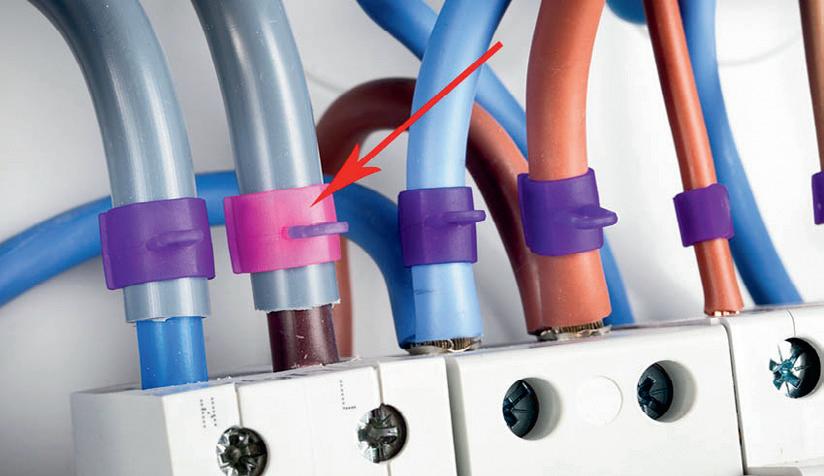
Your Global Automation Partner
SWITCHBOARD HOT SPOT DETECTION Safe Connect Australia-New Zealand has released colour change clips that display and remain bright pink the moment any cable or connection becomes hot, proving a cost-effective way to permanently monitor electrical connections and components.
The simple push-on application makes it easy to retrofit to existing electrical installations or include in new projects. Unlike expensive thermal imaging, which provides a snapshot of current operating loads, the permanent colour change when a cable reaches 71°C provides an indication of all hot spot events, regardless of when they occurred.
Available in various sizes to fit all types of cables, the clips attach to the cable insulation and create no interference with electrical connections.
Safe Connect Australia-New Zealand
www.safeconnectaustralia.com.au
INTELLIGENT INFRASTRUCTURE GATEWAY The Vertiv Liebert RDU501 is an intelligent infrastructure gateway appliance that integrates with data centre racks. It enables operators to monitor the performance of all IT assets, including thermal management units, UPS and generator sets.
The product is an upgrade to the existing Liebert RDU-A G2 appliance, and comes equipped with a web server, automated IT server shutdown and out-of-band management to enable complete control over data centre infrastructure. The appliance offers more device connections than its predecessor and also collects data from environmental sensors for enhanced infrastructure monitoring.
Vertiv Co
www.vertivco.com

Get More Reliable Detection of Valves in Processing Applications
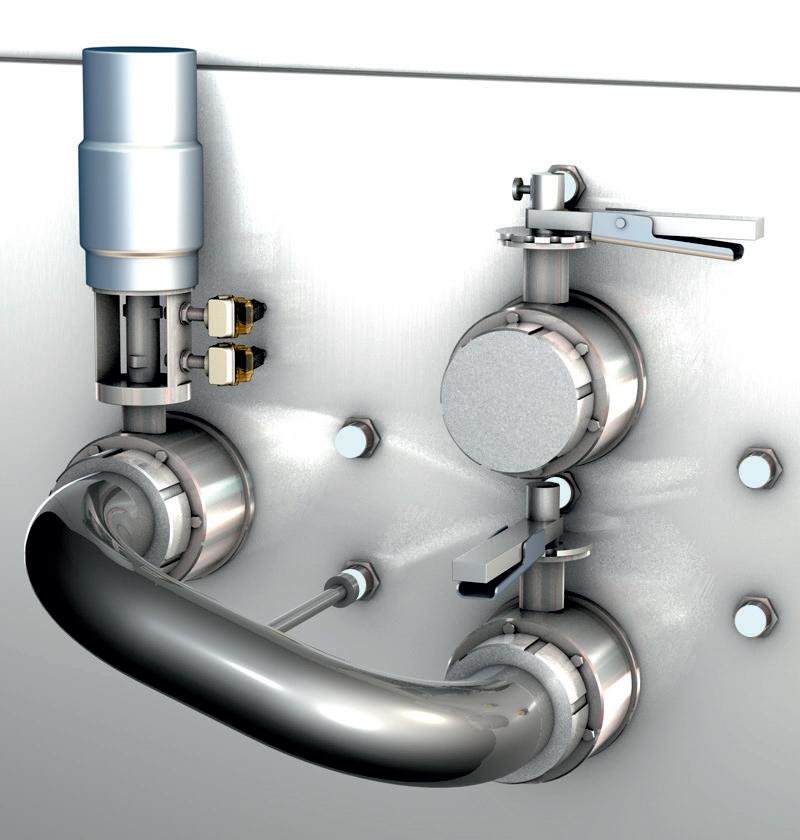
Choose rugged inductive sensors to more reliably monitor the position of valve handles on tanks and containers during processing applications. Actuated valves receive control signals from sensors and other devices to enable more efficient processing. With an assortment of potential mixtures, it is important to use sensors that are accurate, can optimize machine efficiency and stand up to harsh cleaning.
Wash-down rated Uprox Inductive sensors from Turck are ideal for liquid processing lines, in filling functions, or other types of food processing machinery to detect metal valves. Plus, IO-Link makes remote monitoring easy.
Contact your local Turck sales representative to learn more.
www.turck.com.au 1300-132-566
FIMER STORAGE PRODUCT AVAILABLE ON SA HOME BATTERY SCHEME FIMER’s REACT 2 residential energy storage solution has been included on the South Australian (SA) Home Battery Scheme. The SA Home Battery Scheme gives all gridconnected South Australians access to their state government subsidies and low-interest loans to help pay for a home battery system and new solar if required.
The subsidy is calculated on the kilowatthour capacity of the battery purchased. With a REACT 2, depending on how many battery modules are installed, home owners could save up to $4000 on a home battery installation.
“It is great to have the REACT 2 on the South Australian home battery scheme,” said Jason Venning, Country Manager, FIMER Australia. “Our solution provides home owners with the choice of a high-quality hybrid inverter and modular battery system from one manufacturer with a 10-year warranty and a battery performance guarantee.”
The storage solution includes a hybrid single-phase inverter available in power ratings of 3.6 and 5.0 kW. It is claimed to have one of the industry’s highest energy efficiency rates, providing up to 10% more energy than lower voltage battery systems. The system is flexible and can be expanded from 4 to 12 kWh, depending on the number of batteries used, and can achieve up to 90% energy self-reliance. Available with both AC and DC side connection, the solution is suitable for both new and retrofit applications.
Alongside the SA Home Battery Scheme, the REACT 2 is also available under the Victorian battery scheme.
FIMER Australia
www.fimer.com AI INFERENCE PLATFORM The Neousys Nuvo-7166GC-T4 is a ruggedised AI inference platform that features two PCIe slots to support an NVIDIA Tesla T4 inference accelerator providing 8.1 TFLOPS in FP32 and 130 TOPs in INT8 for real-time inference, based on a trained neural network model. Powered by an Intel 9th/8th-Gen Core 6/8-core CPU and 64 GB DDR4-2666, it is designed to offer an optimal balance between CPU, GPU and memory performance.
The Nuvo-7166GC-T4 Package utilises Neousys’s Cassette module that has an Air Tunnel Design to guide intake air to flow through the passive heat sink of the NVIDIA Tesla T4. The Cassette module is equipped with a second fan to deliver airflow for a second performance PCIe card installation. This cooling design guarantees operating temperatures of up to 60°C with a sustained 100% CPU and GPU loading.
The system features an M.2 NVMe interface that supports ultra-fast disk access and USB 3.1 Gen2, GbE and PoE ports for data input. The Cassette module offers an additional Gen3 x8 link PCIe slot for installing a high-performance PCIe card or a variety of sensor or image acquisition cards.
Backplane Systems Technology Pty Ltd
www.backplane.com.au

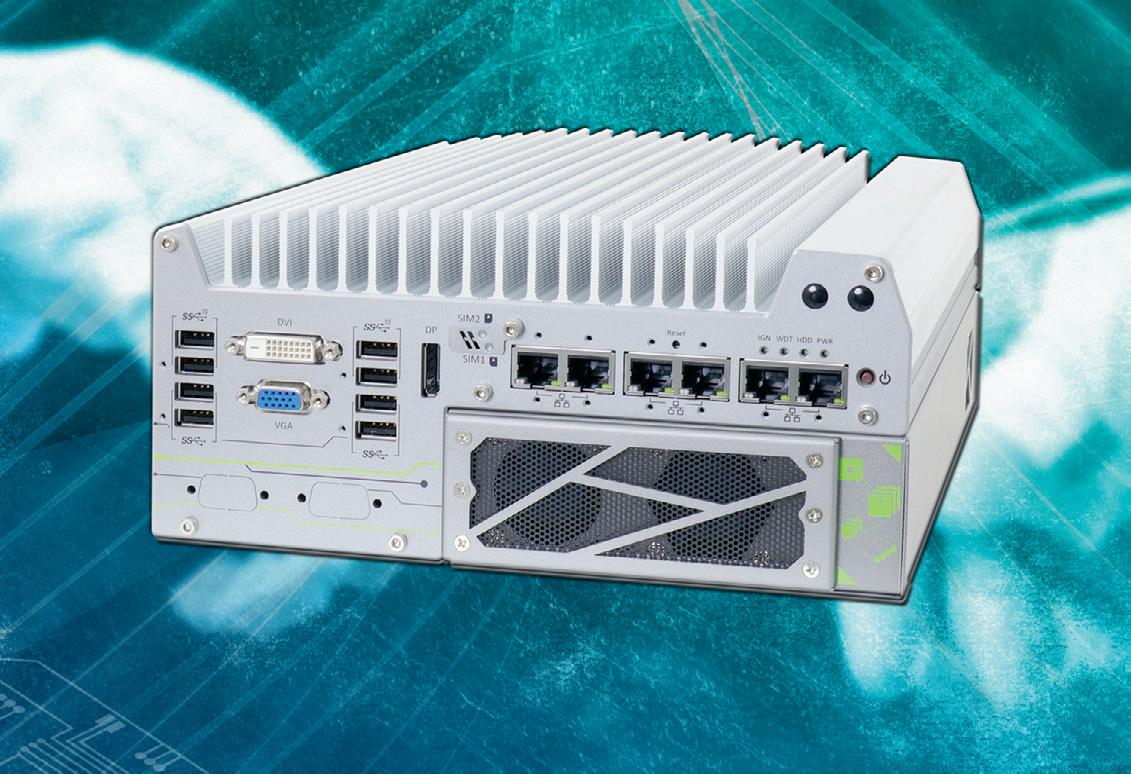
THREE-PHASE HYBRID INVERTER SolarEdge is bringing DC optimisation to the three-phase residential market in Australia with the introduction of a hybrid inverter that offers design flexibility.
With fewer, longer strings, the inverter addresses typical PV design restrictions, such as varying panel types and string lengths. Allowing for simple installation of large systems, the solution is said to reduce roof penetrations and allow for multiple orientations and tilts on the same string.
Supporting a simplified plug-and-play installation of the SolarEdge battery — when available — the hybrid inverter presents a single solution for both energy storage and on-grid PV. With easy future upgrades, such as battery storage and smart energy add-ons, the inverter further utilises excess energy production. For maximum system efficiency, the solution leverages additional power from DC oversizing up to 200% — because energy that would normally be lost in an AC-coupled solution will be redirected to a battery for optimised self-consumption and fast system ROI.
The product will be available in the 10, 8.25, 7 and 5 kW power range.
SolarEdge Technologies Inc.
www.solaredge.com


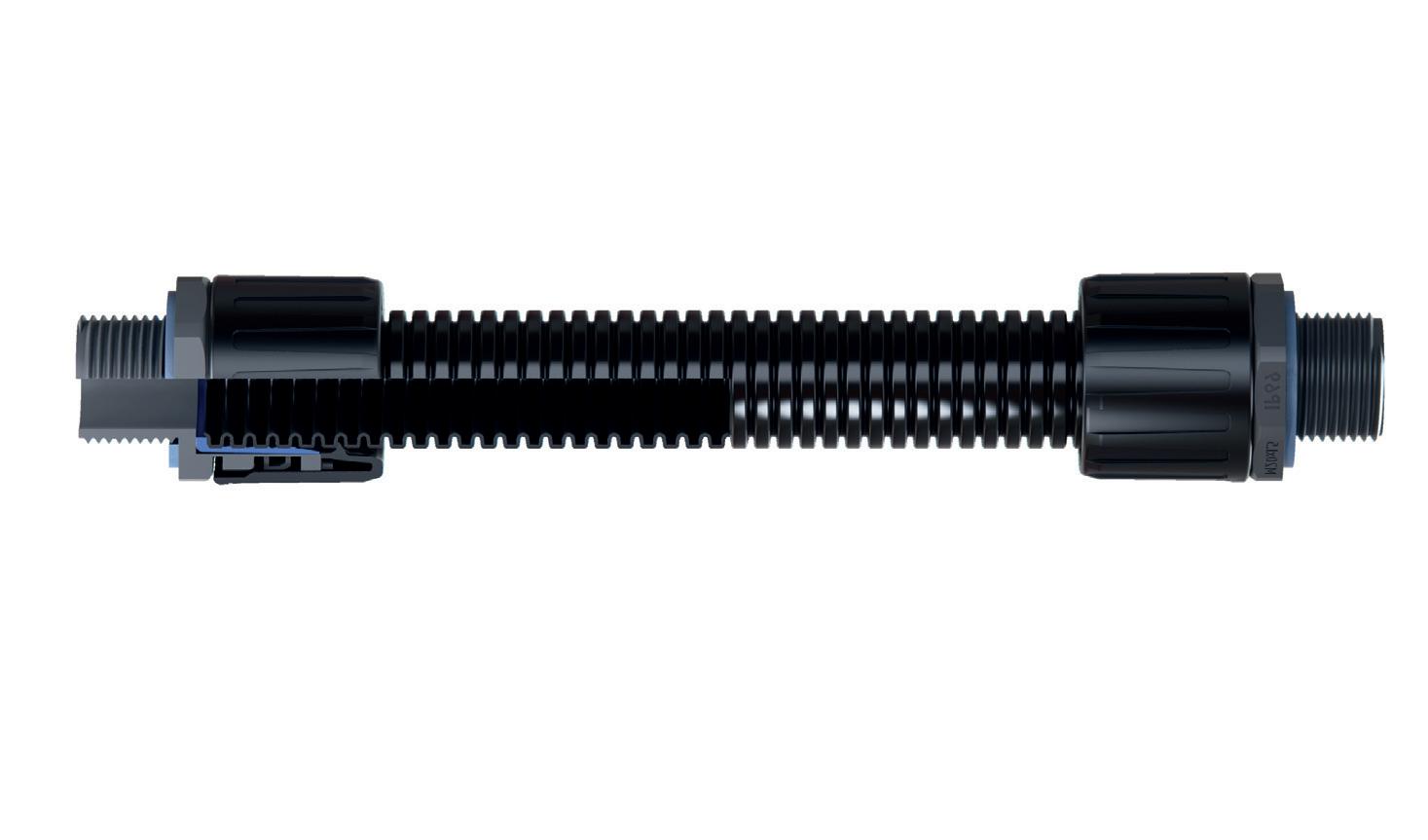


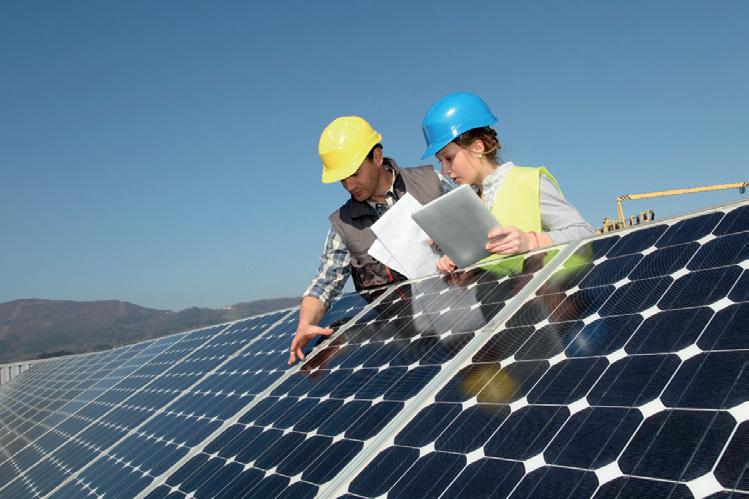



PANDEMIC PAUSE OF OUR WAR ON WASTE
Preston Geeting*
Only eight months ago, the world was a very different place. Shoppers were beginning to bring their own bags to grocery stores and opting to use disposable products. It was evident that consumer sentiment had massively shifted and a new focus on friendly packaging solutions was emerging. 2020 was set to be the year that the ‘war on plastic’ would make great advances; then along came coronavirus and that all changed.
In less than a year, COVID-19 has turned our world upside down. As we all contended with the unfamiliarity that came from living in a new normal, the war on plastic took a back seat to the pandemic. The pandemic brought a tidal wave of plastic with it; plastic that filled our homes, streets, rivers and oceans.
But why did this happen?
How could a virus press pause on global sustainability goals and instead make plastic fantastic again?
1. Working from home As workers were forced from their office cubicles to their kitchen tables, and lockdowns and quarantines ensued, life changed dramatically for everyone.
E-commerce and home delivery soared as people shopped online and ordered takeaway meals instead of dining out at restaurants and cafes. The demand for efficient and effective protective packaging was high as people sought goods that were delivered undamaged but were also safe and hygienic. The risk of surface contamination had been reported. People therefore were worried and opted for plastic covered foods and goods to ensure their products had not been touched or coughed upon by a COVID-19 infected person.
2. Disposable gloves and masks The World Health Organization recommended the use of masks to overcome the risk of infection. Since then, many areas of the world have made wearing masks compulsory.
Sales of PPE have soared; however, the number of masks, gloves and face shields being discarded incorrectly has also soared. These items are now starting to litter our streets, beaches and oceans.
The World Wide Fund for Nature estimates that based on the number of masks being purchased currently around the globe, if only 1% of masks were discarded incorrectly and ended up as litter, this would result in 10 million masks being dumped in the environment.
3. Recycling is not possible One of the greatest barriers to sustainability is simply not having sustainable options available. The pandemic has challenged waste reduction by removing recycling as an option.
Those who are committed to recycling have found that in many cases they are no longer allowed to due to restrictions imposed by the virus. Some coffee retailers are refusing to serve coffee in reusable cups. Some establishments are now advising customers “don’t bring your own containers”. Due to harsh lockdowns, charity shops and recycling depots have been closed and recycling services have been suspended.
In many cases today, even if you really want to recycle your unwanted goods and promote a circular economy, you can’t.
A moral dilemma of epic proportions Despite the evident health concerns that a global pandemic brings, consideration must to be given to the heavy burden single-use plastic packaging has on the environment. Sustainability was already a major global issue before COVID-19 and is now to a certain regard, ‘on the back burner’. At what point will the focus return and if it does return, will it be too late? ©stock.adobe.com/au/shintartanya Together we can “It is tragic to see how coronavirus has impacted global health and how petrol chemical companies leveraged it to accelerate more plastic usage in order to roll back progress on plastic pollution,” stated Susan Koehler, Chief Marketing Officer at Footprint, a USbased material science engineering firm focused on reducing or eliminating plastics through the development and manufacturing of revolutionary plant-based technologies.
“The pandemic has challenged people’s view of sustainability because they are understandably worried about health and hygiene, but it is still possible to protect your health and the environment. There needs to be more support and education in this area. There needs to be more innovation in packaging development and collaboration between recycling companies and providers. We know that by working together we absolutely can achieve a sustainable future, for ourselves, our children and our children’s children.
Getting back to where we belong The world has changed and by now we all know that the new normal is here to stay. We might not be going back to life as we knew it just yet, but sustainable development goals for consumption and production will become a key global priority once again.
Technology is already well on its way to creating a recyclable, friendly packaging solution. It will be the most innovative companies that embrace this technology and lead the way forward in the race to protect our planet and build a more sustainable future.
*Preston Geeting is the co-founder and director of Packform, a company that aims to be a tool that allows all players in the packaging industry to achieve maximum efficiency with minimum effort. It can provide a borderless platform that allows its users to find suppliers locally, nationally or internationally. IP67 RUGGED GPU COMPUTERS The Neousys SEMIL Series of fanless GPU computers features a patented system architecture, specialised chassis, custom-moulded O-ring sealed enclosure and M12 connectivity. Available with various IP rating configurations, the semi-military computers are said to offer reliability under extremely harsh conditions in chemical, food and beverage and factory environments, as well as in industrial autonomous vehicle and military applications while maintaining COTS availability. They feature MIL-STD-810G shock and vibration capability and EN 50155 railway certifications.
SEMIL supports an NVIDIA Tesla T4 or a Quadro P2200 GPU. It can operate under 100% load without the GPU throttling at up to 62°C ambient temperature. As well as being IP67 waterproof, the system is enclosed in a stainless steel and aluminium chassis for corrosion resistance.
The system is also equipped with robust M12 connectors, and also comes in various form factors including 2U 19″ half-rack and full-rack form factors or with brackets for flexible rack or wall mounting. A SuperCap UPS can also be included to ensure the system continues to operate in the event of an unforeseen power outage.
Backplane Systems Technology Pty Ltd
www.backplane.com.au

APPLYING THE CIRCULAR ECONOMY TO WATER Kirsty Bauer*, Environmental Scientist at SMEC
Australia, and the world, is increasingly seeing the effect of climate change on our water supply and security. Scarcity and drought are becoming more prevalent, placing pressure on the current water supply network, and communities are expecting better solutions. As we prepare for summer, it is timely to discuss how we can best utilise our existing water supplies and create a more resilient future.
The concept of a circular economy challenges the traditionally linear takemake-use-dispose behaviour on which our society is built, and envisions an economy based on regeneration, re-use and repurposing the resources we have. The water industry is increasingly adopting an integrated approach that aims to optimise the assets, improve catchment health and deliver better value for customers, but what is next?
One area which is still evolving is potable water (ie, water treated to drinking quality) being used by industry and manufacturing in situations where non-potable water would be suitable. Non-potable water is a massive resource in Australia which is generally underutilised and often literally going to waste, by being diverted to stormwater or sewage treatment plants and ultimately released into the environment.
This water is a vital part of developing a more resilient future and can be sourced from greywater harvesting, rainwater capture, from water exported from sewage treatment plants and a range of other sources (such as harvesting humidity). It presents a significant opportunity to protect our drinking water supply whilst also supporting economic growth and the environment.

A collective action plan A collective, multi-pronged approach is required to develop a cirand efficiently whilst also better utilising existing and new nonpotable water sources. There is a need to define the spectrum of water-quality requirements for different activities and their likely demands; for example, using rainwater to water gardens, top up swimming pools, suppress dust on construction sites and wash vehicles. These solutions are achievable by constructing simple community or district rainwater collection points to enable greater accessibility to this type of water supply.
An action plan for connecting the water sources with the water users is needed. Such a plan would focus on: • The non-potable water sources available; for example, water discharged from sewage treatment plants used in irrigation schemes, and where that water could be best used to replace potable water in the first instance. • Sources of non-potable water that could be harnessed with minimal difficulty (rainwater, for instance) and replace potable sources nearby. As an example, local government requirements for new developments with roof/stormwater drainage volumes over a certain amount to include a rainwater tank with the water used onsite. •Identifying the highest water uses where potable water can be replaced and manage the implementation of the replacement measures. The above approach recognises that potable water redundancy would likely be required in the transition period, but the journey towards change would have been started.
©stock.adobe.com/au/Krafla
Legislation is only part of the solution As with most water infrastructure, this requires a long-term view and commitment. Work has been done on quality requirements for re-use purposes for several decades now, and is increasingly better supported by evidence. This process has, to some extent, reached a milestone with the final documents in the National Water Quality Management Strategy’s ‘Australian Guidelines for Water Recycling’, but legislation and planning does not always support advanced re-use.
Re-use tends to vary on a state-by-state basis — for instance, Class A re-use requirements in Victoria (which match Queensland’s Class A+) are well developed. Education of authorities and developers is reasonably progressed, but there is less support for onsite re-use options such as composting toilets.
Planning and legislation need to be revised to support a nationally consistent approach coupled with effective communication, training and support of all regulatory officers tasked with assessing applications, as well as educating developers and industry.
In addition, provision must be included for future changes, which may, for instance, allow households to generate electriccular economy for water, to utilise potable water more effectively
ity, compost and re-use water of varying quality onsite, without needing to use delivery infrastructure.
Creating a water network more resilient to change The obvious benefit to developing a circular economy for water in Australia is the development of a water network which is more resilient to change. By utilising our existing water supplies more efficiently we are creating a system which, at its core, values the water supplies and assets we already have.
Taking the concepts of a circular economy and applying them to the water industry is an opportunity to approach the required changes in a methodical and logical way. This could include prioritisation of planned investment from linear infrastructure to more resilient circular systems, ranging from small local systems to large-scale water re-use schemes.
This shift in perspective is vital; we need access to safe, secure drinking water — without it, our civilisations would not be able to exist, let alone grow. As populations continue to multiply and water supplies continue to become uncertain and decrease, water security and resilience will continue to generate national and global conversation and focused actions.
*Kirsty Bauer has extensive knowledge and experience in sustainable infrastructure projects and is a strong advocate for generational change in the implementation of sustainability. She has demonstrated expertise in professional services, across energy, carbon, environmental management, sustainability, waste and water management.



